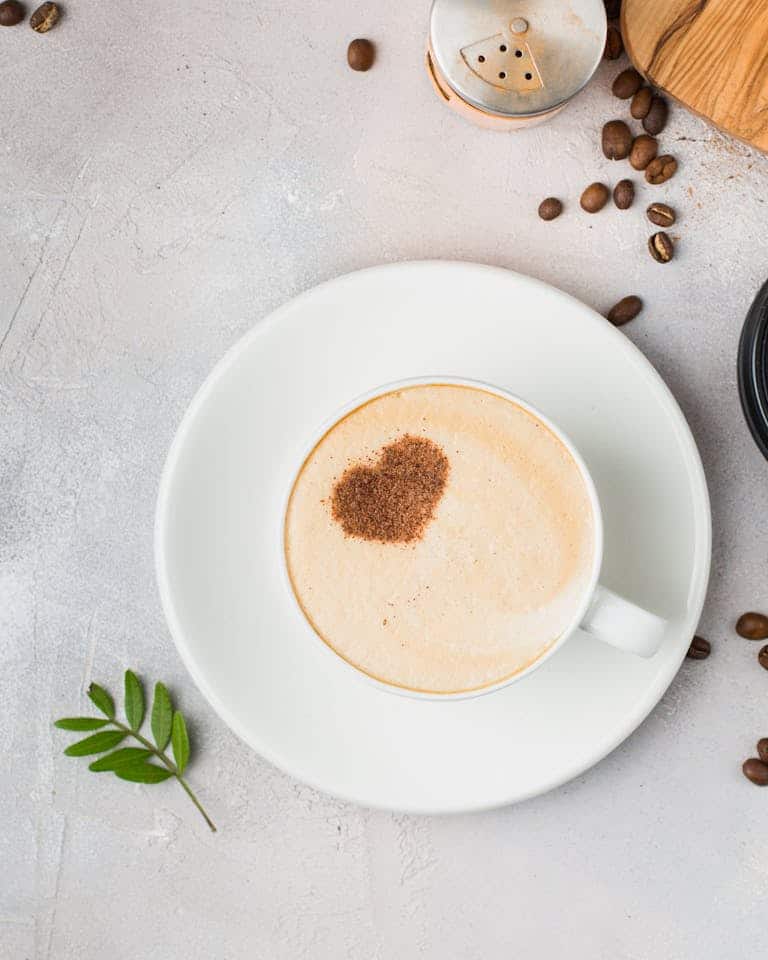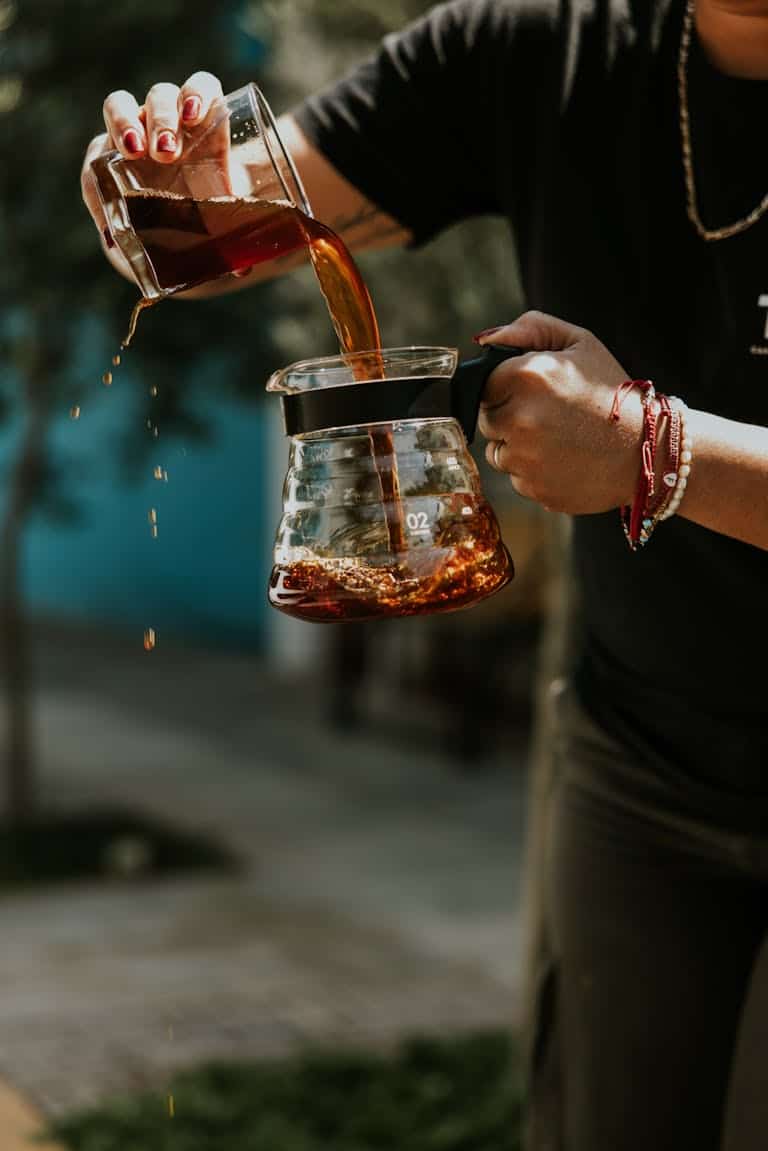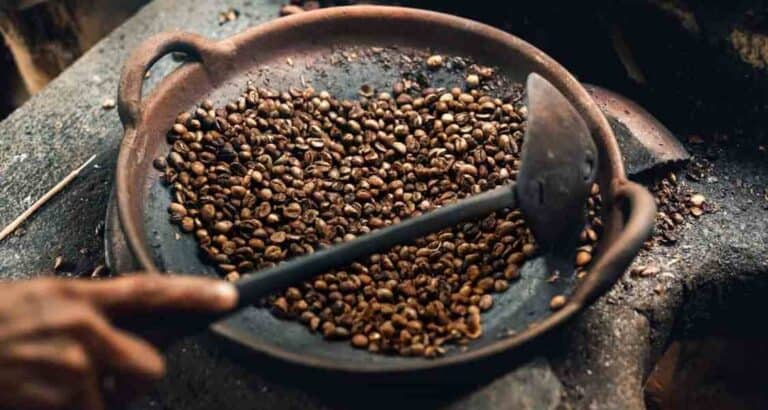How to Store coffee beans Perfectly in 2024
Introduction:
As a coffee lover, you know there’s nothing quite like the taste of a freshly brewed cup of coffee.
But did you know that your coffee beans can lose their freshness within days if not stored properly?
That’s why I wanted to teach you How to Store coffee beans Perfectly
In fact, coffee beans begin to lose their flavor and aroma just 15 minutes after grinding! That’s why storing them correctly is essential to preserving that rich, delicious taste we all crave.
In this guide, we’ll dive into the expert tips on how to store your coffee beans perfectly to ensure every brew is as fresh as possible.
From airtight containers to temperature control, let’s make sure your coffee beans stay at their best for longer!
Why Coffee Freshness Matters
The Science Behind Coffee’s Flavor Loss
Coffee beans are complex, containing over 800 volatile compounds that contribute to the flavor and aroma we love. Once exposed to air, light, or heat, these compounds start to degrade, causing a rapid decline in flavor.
Oxidation is one of the biggest enemies of coffee freshness. When coffee beans come into contact with oxygen, they begin to undergo chemical changes. This process strips away the rich oils and aromas that give coffee its distinct flavors.
Coffee beans contain natural oils that are responsible for much of their flavor. These oils are released during the roasting process, giving the beans their rich, full-bodied taste. However, oils are also highly sensitive to external factors such as air, moisture, and light.
When exposed to these elements, the oils begin to break down and spoil, leading to a loss of flavor and aroma.
Proper storage helps preserve these oils, ensuring that your coffee retains its complex taste for longer.
Key Signs That Your Coffee Beans Have Gone Stale
Wondering if your coffee beans have lost their freshness? Here are some clear signs:
- Dull aroma: Fresh coffee has a strong, pleasant aroma. If your beans smell flat or stale, they’ve likely lost their freshness.
- Bitter or sour taste: Stale coffee often tastes bitter, sour, or flat due to the breakdown of oils and other compounds.
- Dry, lifeless appearance: Fresh coffee beans should have a glossy sheen from the oils released during roasting. If the beans look dull and dry, they’re past their prime.
- Lack of crema: When brewed, stale coffee beans won’t produce the thick, creamy crema that fresh beans generate, especially in espresso.
How to Store Coffee Beans for Maximum Freshness
Use Airtight Containers to Protect Against Air Exposure
Air is the number one enemy of coffee bean freshness. Once exposed to air, coffee beans begin to oxidize, losing flavor and aroma. To prevent this, it’s essential to store your beans in an airtight container.
Look for containers designed specifically for coffee storage, as they often feature vacuum seals or one-way valves that allow carbon dioxide to escape while keeping oxygen out. This helps maintain the integrity of your coffee beans and preserves their rich taste for longer.
Why Dark, Cool Spaces Are Ideal for Coffee Storage
Temperature and light can significantly impact the freshness of your coffee. Heat speeds up the degradation process, causing oils in the coffee beans to go rancid faster, while light can break down the beans’ compounds.
The best practice is to store your coffee in a cool, dark place—like a pantry or cupboard—away from direct sunlight, heat sources, or appliances that give off warmth.
Avoid Storing Beans in Transparent Containers
While it may be tempting to display your coffee beans in a stylish glass container, this can lead to faster degradation.
Transparent containers allow light to penetrate the beans, accelerating the breakdown of the oils that contribute to their flavor.
Instead, opt for opaque containers that block light, ensuring your beans are protected from harmful UV rays.
If you must use a glass container, store it in a dark place to mitigate the effects of light exposure.
The Impact of Moisture on Coffee Bean Quality
Moisture is another factor that can spoil your coffee beans. Coffee is hygroscopic, meaning it absorbs moisture from the air, which can lead to a loss of flavor and even mold growth in extreme cases.
This is why storing coffee beans in humid environments is not recommended. To avoid moisture damage, always store your beans in a dry environment and use airtight containers to seal them off from ambient humidity.
Avoid opening your storage container unnecessarily to reduce the exposure to moisture.
By following these best practices, you can extend the freshness of your coffee beans and ensure that every cup tastes as fresh and flavorful as possible!
Best Containers for Storing Coffee Beans
The Benefits of Vacuum-Sealed Containers
Vacuum-sealed containers are ideal for preserving the freshness of coffee beans. By removing air, they prevent oxidation, which is a leading cause of flavor and aroma loss.
These containers create an airtight environment that significantly slows the breakdown of oils and compounds responsible for coffee’s rich taste.
They also protect beans from moisture, light, and temperature changes that can degrade quality.
For those looking to maintain optimal freshness over time, vacuum-sealed containers are an excellent investment.
Glass vs. Plastic vs. Metal Containers: Which Works Best?
Glass: Non-reactive but allows light, which can reduce freshness. Opt for tinted glass or store it in a dark place.
Plastic: Lightweight but can absorb odors and isn’t great for long-term storage.
Metal: Durable and light-resistant, stainless steel is highly effective for maintaining coffee freshness when sealed well.
Metal or light-protected glass offers the best durability and freshness.
How to Use One-Way Valve Bags for Long-Term Storage
One-way valve bags are specially designed for coffee storage and are commonly used by coffee roasters. These bags have a built-in valve that allows carbon dioxide (CO2) to escape while preventing oxygen from entering.
This is important because freshly roasted coffee beans release CO2, and if that gas builds up, it can affect the flavor.
For best results:
- Keep beans in their original one-way valve packaging if you purchase them this way, as they are designed to protect the beans from oxygen.
- Store the bag in a cool, dark place to protect the beans from light and heat.
- Roll or fold the top of the bag tightly to minimize air exposure if the bag isn’t completely full, securing it with a clip.
 Common Mistakes in Coffee Storage and How to Avoid Them
Common Mistakes in Coffee Storage and How to Avoid Them
Storing Beans in the Fridge: Why It’s Not Always a Good Idea
A common misconception is that refrigerating coffee beans can help preserve their freshness. In reality, the fridge is one of the worst places to store coffee beans. Here’s why:
Moisture: Coffee beans are highly absorbent, and refrigerators are full of moisture. Beans can easily take on moisture from the air, which degrades their flavor and texture.
Odor absorption: Coffee beans can also absorb the odors of other foods in your fridge, leading to a compromised flavor in your coffee.
Temperature fluctuations: Opening and closing the fridge causes temperature changes, which can lead to condensation on the beans, further impacting their quality.
Leaving Beans in the Original Packaging
While it might be convenient to keep coffee beans in the bag they came in, the original packaging is often not designed for long-term storage. Most commercial coffee bags are made of paper or thin plastic, which doesn’t offer adequate protection against air, moisture, and light. Even if the bag has a one-way valve, it’s not always airtight once opened.
Storing Beans Near Heat Sources Like Ovens or Stoves
Storing coffee beans near heat sources such as ovens, stoves, or even on kitchen countertops where they can be exposed to direct sunlight is a mistake that can significantly shorten the shelf life of your beans. Heat accelerates the breakdown of the oils in the coffee beans, leading to a faster loss of flavor and aroma.
Failing to Check the Roast Date: How Freshness Starts at the Roast
The roast date of coffee beans is crucial when it comes to determining freshness. Coffee is at its peak flavor within two to three weeks after roasting, and after that, it starts to lose its freshness. Failing to check the roast date when purchasing beans means you might be buying coffee that’s already well past its prime.
Avoiding these common mistakes and following proper storage techniques will help ensure your coffee beans remain fresh, flavorful, and aromatic, allowing you to enjoy the best cup of coffee possible.
How Long Do Coffee Beans Stay Fresh?
Shelf Life of Whole Beans vs. Ground Coffee
The shelf life of coffee beans can vary depending on whether they are whole or ground.
Whole coffee beans last significantly longer than ground coffee because they retain their oils and flavors within their intact structure.
Once the beans are ground, they are exposed to air, light, and moisture, causing them to lose freshness much faster.
Whole beans: When stored properly in an airtight container, whole coffee beans can stay fresh for about 2-4 weeks after roasting.
After this period, they begin to lose their vibrant flavors, but they may still be drinkable for up to a couple of months, though with diminished quality.
Ground coffee: Ground coffee has a much shorter shelf life. Once ground, it’s best to use it within 1-2 weeks to enjoy optimal flavor. Ground coffee starts losing its freshness almost immediately due to the increased surface area exposed to air.
The Freshness Timeline: Day 1 vs. Week 1 vs. Month 1
- Day 1: After roasting, coffee beans are at their absolute freshest. They release CO2 for several days, and the aroma and flavor are rich and intense. Coffee is typically best after the beans have degassed for a few days to allow the flavors to stabilize.
- Week 1: During the first week after roasting, coffee is in its peak freshness window. The flavor is vibrant and full-bodied, especially for whole beans stored properly.
- Month 1: By the end of the first month, whole coffee beans will begin to lose some of their complex aromas and flavors, although they may still produce an acceptable cup of coffee. Ground coffee, however, will be notably stale by this point.
The Role of Roast Type in Coffee Bean Longevity
- Light roasts: These beans are denser and have more moisture remaining, which can help them stay fresher for slightly longer. However, the delicate flavors of light roast coffee are more prone to degradation from air exposure.
- Medium roasts: They strike a balance between flavor and longevity. Medium roasts are often favored because they retain a good portion of their oils and flavors while having a reasonable shelf life.
- Dark roasts: Dark-roasted beans have less moisture due to their longer roasting time, which makes them more susceptible to going stale quickly. Their oils are also more prone to oxidation, which can cause a loss of flavor faster than lighter roasts.
How to Tell If Your Coffee Beans Are Still Fresh
Here are a few easy ways to check if your coffee beans are still fresh:
- Smell test: Fresh coffee beans have a strong, inviting aroma. If your beans have little to no smell or they smell flat and musty, they are likely stale.
- Visual check: Fresh coffee beans have a slight sheen due to the natural oils released during roasting. If your beans appear dry and matte, they’ve likely lost much of their freshness.
- Taste test: Fresh coffee has a balanced, vibrant flavor with distinct tasting notes. If your coffee tastes dull, bitter, or flat, it’s a clear sign that the beans have gone stale.
- Lack of crema in espresso: If you’re making espresso and notice that the coffee isn’t producing a rich crema (the foam on top), it could be a sign that your beans have lost their freshness.
Advanced Tips for Extending Coffee Bean Freshness
Storing Beans in Small Batches for Daily Use
For optimal freshness, it’s a great idea to divide your coffee beans into smaller portions. This minimizes how often you open your main storage container, reducing the beans’ exposure to air, moisture, and light. By only exposing a small amount of coffee at a time, you can keep the rest of your beans in their prime condition for longer.
How to do it: Portion your beans into smaller, airtight containers or resealable bags for weekly or daily use. Keep the bulk of your beans stored securely in a cool, dark place.
Pro tip: Only open the small container or bag with enough coffee to last you a few days, keeping the rest of the beans untouched and fresh.
Vacuum-Sealing Beans for Long-Term Storage
Vacuum-sealing is one of the most effective methods for preserving coffee beans over long periods. By removing all air from the storage environment, vacuum-sealing prevents oxidation, which is the primary cause of staleness in coffee beans. This method is especially useful if you buy beans in bulk and want to ensure their freshness for months.
How to vacuum-seal beans: Use a vacuum-sealer machine to remove air from the storage bag and seal it tightly. Vacuum-sealed beans can be stored in a cool, dark place or even in the freezer for extended periods without compromising freshness.
Tip for freezing: If you vacuum-seal your beans for freezing, break them into small portions. This way, you can take out only what you need without exposing the entire batch to air and temperature changes.
Conclusion:
Keeping your coffee beans fresh isn’t just about the taste—it’s about the entire coffee experience.
By using the right storage techniques, you can ensure that each cup is filled with the bold, vibrant flavors you expect from fresh coffee beans.
Whether it’s investing in the right containers or avoiding common storage mistakes, a few simple steps can make a world of difference in your coffee’s quality.
Try out these expert storage tips and enjoy the perfect cup, every time!






